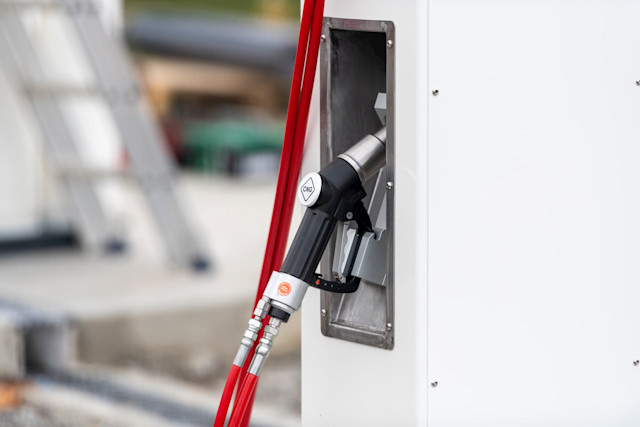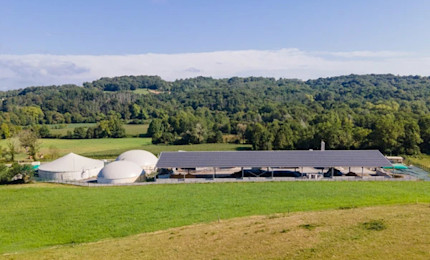Urgence gaz 0 800 028 800

BioNGV: 100% renewable mobility
To encourage the emergence of sustainable and more environmentally responsible mobility, France has set itself a clear target: 0 new cars powered by diesel or petrol from 2040 onwards. To achieve that, alternatives to traditional fuels are emerging. They include Natural Gas for Vehicles (NGV) and its renewable version, BioNGV, which offers an attractive prospect for the decarbonisation of mobility and the circular economy.
NGV and BioNGV: what are they?
Natural Gas for Vehicles (NGV) is an attractive option for replacing traditional fuels. It consists in supplying vehicles with natural gas, a form of energy which is already used in domestic settings. This alternative fuel has a reduced impact on the environment, since it emits virtually no fine particulates, and its nitrogen oxide emissions (NOx) are half the level set by the Euro VI standard.
BioNGV goes one step further. Natural gas, which is a fossil fuel, is replaced in this case by biomethane, a renewable biogas produced by the fermentation of organic waste from agricultural, industrial or domestic sources. This green fuel is produced locally and has an excellent carbon footprint. Indeed, in addition to virtually zero greenhouse gas emissions, BioNGV emits neither NOx, nor black smoke.
BioNGV, like NGV, can be presented in compressed form (BioCNG) or liquefied (BioLNG). The compressed form is the one most widely used today in cars and heavy goods vehicles. The liquefied form, although it allows storage of greater quantities of energy, brings with it more demanding technical constraints. Its use today is thus dedicated more to industrial sites.
What are the advantages of BioNGV?
Driving on BioNGV has a number of ecological and practical advantages for users:
less pollution (fine particulates, nitrogen oxides etc.) and lower CO2 emissions,
lower losses when filling up,
less noise – particularly advantageous for urban driving,
driving range suited to urban and regional journeys,
available locally,
unrestricted travel during peak pollution times, particularly in the Low Emission zones increasingly encountered in cities.
A green fuel energising the local economy
In addition, biomethane production has an important role to play in the regions. In addition to reducing greenhouse gases, it contributes to better waste management and helps make agriculture more sustainable. This means farmers can collect the residue from methanisation, known as “digestate”, and use it as a renewable fertiliser, as a replacement for chemical fertilisers.
And since biomethane is a locally produced and locally consumed source of energy, it allows the creation of jobs which cannot be moved elsewhere. The regions thus become players in a circular, virtuous economy.

How is Teréga supporting the development of BioNGV?
Development of the biomethane industry and BioNGV is important in ensuring an energy transition that will benefit regional economies. This global approach is 100% part of our historic and strategic DNA. Our mission as a gas transport network operator is to facilitate the switchover of local use to renewable and decarbonised energy sources, and thus achieve the targets set in the French Energy Transition for Green Growth Law (LETCV): 15% renewable energy used for transport by 2030.
That is why we are encouraging the creation in the far South-West of methanisation units and NGV/BioNGV filling stations. To do that, we are supporting project owners through their processes, right through to connection to our network.
We are also taking action within our own company. As a result, we opened Teréga’s first private BioNGV station in 2021 at our headquarters in Pau. This means we can fuel our fleet of NGV powered vehicles.


Dominique MocklyChairman and CEO of TerégaToday, we have to diversify the energy mix in transport, which is still too heavily dependent on oil-derived products. BioNGV is a positive energy source with many possibilities.









